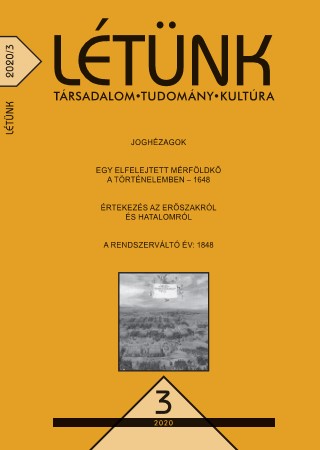A SZABADKAI JOGI KAR MAGYAR HALLGATÓINAK SZÁMA, DEMOGRÁFIAI JELLEMZŐI ÉS TANULMÁNYI EREDMÉNYEI
Number, Demographic Characteristics and Study Results of Hungarian Students at the Faculty of Law in Subotica
Author(s): Zoltán MészárosSubject(s): Higher Education , Sociology of the arts, business, education
Published by: Fórum Könyvkiadó Intézet
Keywords: Faculty of Law in Subotica; new sources; Hungarian students; modified statistics; characteristics of Hungarian students
Summary/Abstract: This study was written after I found new sources among the archival material in the Historical Archive of Subotica, more precisely 9 boxes with documents. Their length is slightly larger than a continuous meter (1.08 m ). In them I found the enrollment forms of 106 new Hungarian students, and their personal files were added too. Based on that fact we can conclude that approximately 447 Hungarian students studied at the Faculty of Law in Subotica, of which, according to our previous knowledge, 71 graduated, or 15.9% of the enrolled Hungarian students. The oldest student was born in 1879, and the youngest in 1922. In Zagreb, the percentage of graduates was much more favorable, which was probably the reason for the attractiveness of Zagreb among the inhabitants of Vojvodina. Unfortunately, I noticed the boxes with the archive material only after the publication of the book edited by academician Tibor Várady, so I changed the numbers in the light of the new data. When examining the documents of the Faculty of Law in Subotica I first reviewed the enrollment forms from 65 boxes, to which I later added data from 9 subsequently discovered boxes. Unfortunately, I had no choice but to recalculate the statistics after the manuscript was completed, since the number of 341 students originally found was modified after 106 students were subsequently discovered, although all this did not greatly change the overall picture. In addition, it is important that there is a trace of that modification somewhere, if for objective reasons a corrected study could not be found in the book. Unfortunately, our past is not sufficiently protected, few people research it, so it is especially important to continue with repeated attempts and to correct mistakes and omissions. This study was also written in that spirit.
Journal: Létünk
- Issue Year: L/2020
- Issue No: 3
- Page Range: 119-127
- Page Count: 9
- Language: Hungarian

